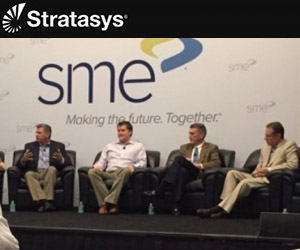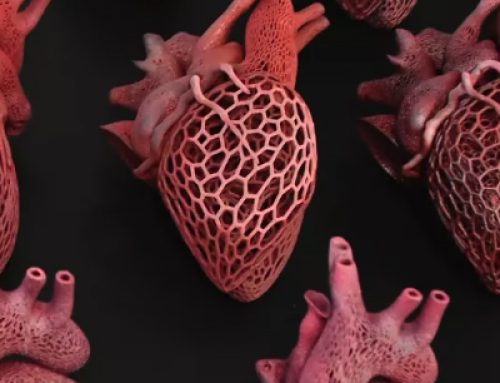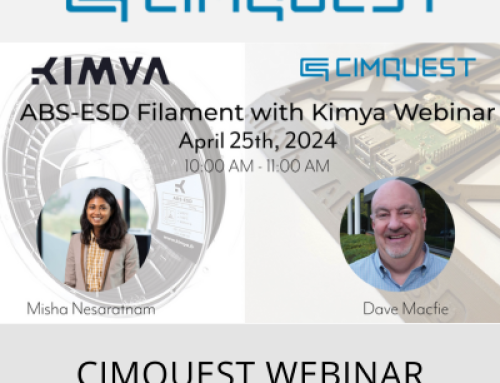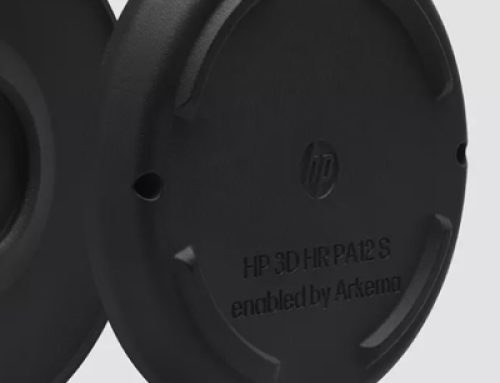SME’s The Big M Conference returned to America’s manufacturing hub – Detroit, Michigan – for a two-day event illustrating the future of manufacturing. The conference gave industry leaders the opportunity to explore emerging technologies and innovations that are needed to create better solutions for businesses.

Stratasys networking breakfast attendees experienced the design advantages and durability of 3D printed parts.
Stratasys kicked off its participation with a networking breakfast, welcoming more than 20 high-level executives from different manufacturing companies for a discussion on the significance of additive manufacturing integration in today’s industrial segments. Attendees included some of the industry’s biggest players: plastic fabrication manufacturer, Midwest Rubber Company; induction heating and melting equipment manufacturer, Ajax TOCCO; and automotive and defense manufacturer, Precision Global Systems.
Stratasys Midwest territory manager and networking breakfast presenter, Paul Carlson, noted that growth of applications in aerospace, automotive, healthcare, and other industrial verticals could eventually support a +$40 billion market over the next 15-20 years.
Joe Gibbs Racing design engineer, Brian Levy, also presented at the breakfast. As one of the leading NASCAR racing teams, Joe Gibbs Racing is no stranger to success both on and off the track. Levy‘s team, a Stratasys automotive customer, has been involved with additive manufacturing for over 10 years and since 2010, in addition to prototypes, Joe Gibbs Racing has been 3D printing jigs & fixtures as well as production parts.

The Big M’s Business Insights into Additive Manufacturing expert panel discussion examined today’s emerging trends in AM and discussed the unique challenges and opportunties that lay ahead.
“Our Stratasys 3D Printers are running 24 hours a day, 7 days a week. We’re making everything from FDM 3D printed chassis fixtures within a day or two to PolyJet 3D printed end-use parts to achieve higher resolution and features,” said Levy.
With high vehicle turnover—an average of 2-3 races per car—production is contingent on advanced technology with lower operational costs and shorter lead times. Applications like composite tooling allow Joe Gibbs Racing to create complex production parts on demand, which reduces waste, inventory costs and production time.
The rise of these tooling applications has grown tremendously as investments are made to develop stronger, production-grade thermoplastics and digital materials with a wide range of physical properties.

Stratasys applications engineer, Mike Block, discussed benefits of using FDM-based tools for paper pulp molds at The Big M. Conference.
Bruce Bradshaw, VP of Marketing North America, echoed Levy’s sentiments during the expert panel discussion, “Business Insights into Additive Manufacturing.” Bradshaw categorized additive manufacturing opportunities into three sections: Prototyping, Production Part Manufacturing, and Jigs, Fixtures and Tooling (injection molding). Though 3D printing is often associated with rapid prototyping, it’s the area of tooling and jigs & fixtures where manufacturers can see tangible ROI on the manufacturing floor.
During the discussion, which featured panelists Bryan Crutchfield of Materialise, Bruce Colter of Linear Mold and Engineering, Inc., and Steven Taub of GE Ventures, Bradshaw used a real-life example straight from the Stratasys manufacturing floor. “We used a CNC tool to produce the door hinges on our Fortus Production Series 3D Printers. By switching our production processes to Fused Deposition Modeling (FDM), we successfully reduced the lead time from 3.5 weeks to 2.5 hours, and cut production cost by 86%.”
As with any disruptive technology, questions were raised concerning industry hype from the media. Just how beneficial is 3D printing to manufacturing facilities? Bradshaw and the panel agreed that companies must invest in training on the manufacturing floor in order to recognize which application tools are right for their operations. “3D printing is not a one-size-fits-all solution. It’s important to familiarize your manufacturing team with this technology, so as it evolves, they recognize its capabilities and how it can be tailored to meet your needs,” explained Bradshaw.








Leave A Comment